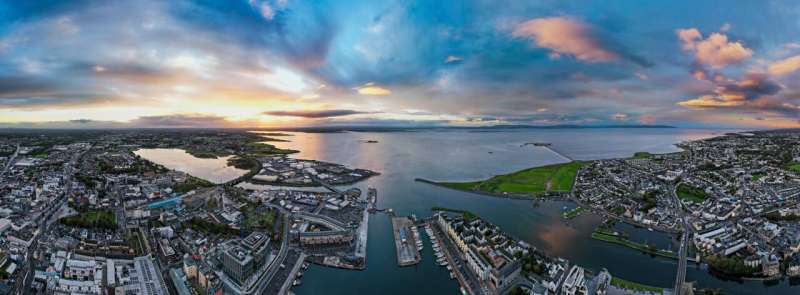This article has been reviewed according to Science X's editorial process and policies. Editors have highlighted the following attributes while ensuring the content's credibility:
fact-checked
trusted source
proofread
How secondary cities can compete with superstar cities through innovation competitiveness

Local universities, global connectivity and entrepreneurship can help secondary cities combat the geographic polarization of innovation in superstar cities, according to new research being conducted in Trinity College Dublin and Ca' Foscari University of Venice.
Superstar cities like London, Dublin, Milan, New York and Bangalore have grown astronomically over the past 15 years, following a "winner-take-all-model" model, according to Dr. Giulio Buciuni, Trinity Business School. In certain countries the growth of these superstars has come at the expense of other cities, notably mid-sized cities or secondary cities. This, he says, is fueling geographic polarization of innovation worldwide.
Dr. Buciuni and colleagues in Italy are researching an alternative model for second-tier cities and have pinpointed the cities of Galway (Ireland), Raleigh-Durham (U.S.), the Ruhr Valley (Germany), Bologna (Italy) as examples of cities that have bucked this global trend and are home to competitive innovation ecosystems despite the presence of a dominant city in the domestic entrepreneurship and innovation scene. The research, published in a new book (in Italian) titled "Periferie competitive: Lo sviluppo dei territori nell'economia della conoscenza" ("Competitive suburbs: Territorial development in the knowledge economy"), describes a more equal and democratic model for competitiveness of second-tier cities.
Dr. Giulio Buciuni, Associate Professor in Entrepreneurship, Trinity, said, "The growing concentration of entrepreneurship and innovation activities in a few global 'superstar' cities is fueling the geographic polarization of innovation, with capital, talent and ideas increasingly flowing to a selected number of cities while other cities are 'left behind.' While inequality across countries is decreasing, inequality within countries is widening, posing serious threats to the economic and political stability of numerous countries.
"Drawing on our examination of the vibrant innovation ecosystems in the secondary cities of Galway, Raleigh-Durham, the Ruhr Valley and Bologna, our research has identified a more equal and democratic model for competitiveness of second-tier cities. Global connectivity; the interplay of local universities and the private sector; and local finance and entrepreneurship are the three factors that make secondary cities competitive. For this model to success all three factors must be in place simultaneously."
The research conducted by Dr. Buciuni and Dr. Corò took place between 2017 and 2022 and relied on the analysis of secondary data as well as primary data, including on-site visits and interviews with local stakeholders in the four secondary cities.
Dr. Buciuni said, "Galway, for instance, was one of Europe's poorest regions in the 1980s and is today home to one of the world's most dynamic entrepreneurial ecosystems in the bio-tech industry. The city is a great example of how innovation can take place even in geographically remote and underdeveloped locales when the three factors that we identified are in place.
"Key for the economic development of the bio-tech ecosystem in Galway was the initial flow of foreign direct investments from American multinationals in the 1980s and 1990s; that was later followed by several public-private collaborations, including collaborations with University of Galway, and led to ad hoc educational curriculum in bio-tech engineering. This, paved the way for the emergence of local new ventures, most of which were established by engineers formerly employed by the subsidiaries of foreign multinationals. This entrepreneurial spirit was supported by financial resources coming from both the public sector and private investors."
Co-author of the book Giancarlo Corò, Ca' Foscari University of Venice, added, "In the Italian context, Bologna has lately emerged as the only mid-size city able to keep up with the astronomic growth of Italy's only superstar city, Milan. Bologna's recent economic development was fuelled by the integration of long-existing industries (particularly in the automotive and machineries sectors) with new knowledge coming from local universities and local firms' participation in global supply chains.
"Unlike Galway, where the bio-tech industry was developed from ground zero, Bologna's stakeholders were able to work together to capitalize on the region's existing industrial expertise and sustain the region's competitiveness and innovation capabilities. Similar to the Galway experience, besides the role played by multinationals in connecting local industries with global pipelines of knowledge, it was the collaboration between firms and universities that allowed the 'recombination' of old industrial assets with new innovative inputs and skilled labor force. In addition, Bologna, unlike other industrial regions in Italy such as Veneto, was able to preserve its local banking sector."
Provided by Trinity College Dublin




















